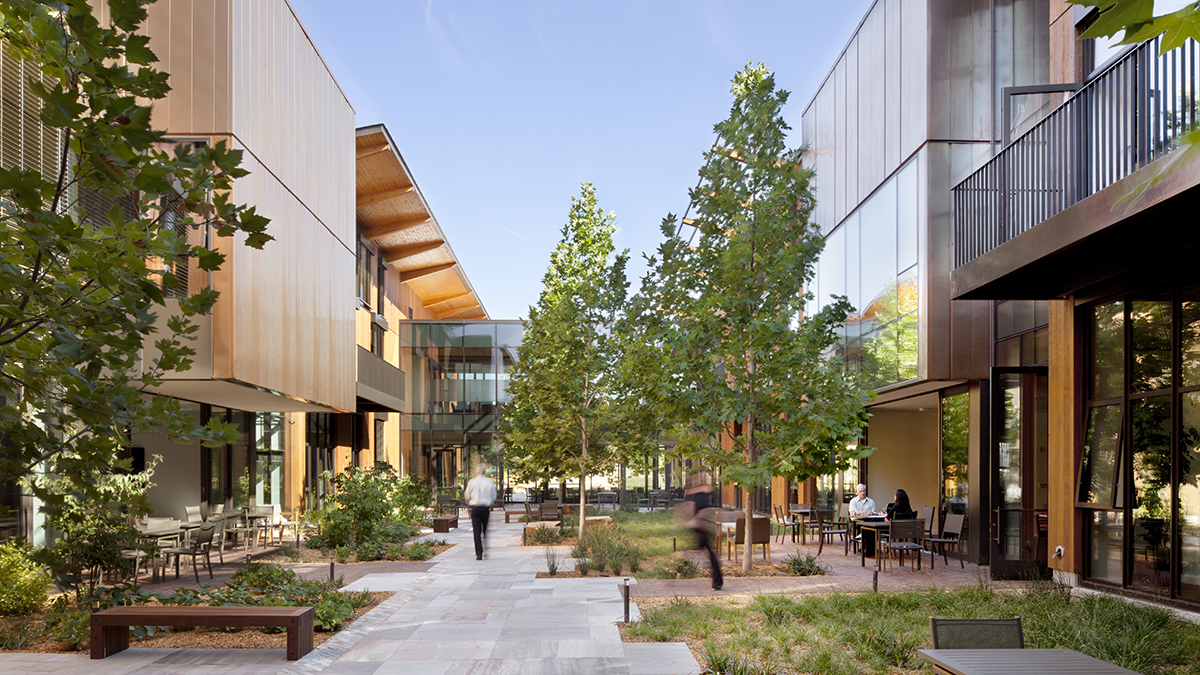Occupant survey data provides insights on occupant satisfaction in LEED and green buildings.
Status: Completed
Funding Sources: CBE Industry Consortium
Project Objective
Study the performance of green and LEED-certified buildings in comparison to conventional buildings, in terms of occupant satisfaction with indoor environmental quality (IEQ).
Significance to Industry
The United States Green Building Council (USGBC) created a widely used framework for rating green buildings with its Leadership in Energy and Environmental Design (LEED) system. By 2014, over 13,000 buildings were have received Platinum or Gold-certification worldwide. LEED’s environmental marketing appeal has been such that many state and federal agencies have mandated that new and renovated buildings acquire certification at specified levels.
With the success of the rating system, there is general agreement that LEED has brought sustainability into the mainstream of building design and construction. What is less clear is the extent to which it has actually reduced the negative effect of buildings on the environment, and/or improved indoor environments for the occupants of these buildings. Comprehensive post occupancy evaluation (POE) studies of LEED-certified buildings is useful to establish the success and shortcomings of the current LEED system, and to guide future editions.
Research Approach
We studied occupant satisfaction in green buildings and LEED-certified buildings, using CBE’s occupant IEQ survey tool and building benchmarking database. This database contains survey responses from hundreds of buildings, making it a useful measure for studying building performance. The survey consisted of a set of core questions to assess occupant satisfaction with four main IEQ factors in the workspace—thermal comfort, lighting, air quality, and acoustics. The survey relied directly on occupants to obtain feedback about how they felt about their IEQ conditions in their space, and how it affected their effectiveness in getting their work done.
We analyzed the survey responses of 21,477 individuals in 144 office buildings, mostly larger office buildings in the United States. Included were 65 buildings that are LEED certified. When evaluated comprehensively, the data do not suggest a significant influence from LEED certification on occupant satisfaction. We found that LEED-rated buildings may be more effective in providing higher occupant satisfaction when occupants are in open spaces rather than in enclosed offices, and when the buildings are smaller in size. Several papers summarizing the findings are listed below.
We are now investigating the sources and influences contributing to the level of occupant satisfaction with IEQ in these buildings and which strategies are most effective in increasing occupant satisfaction. We hope that this study will lead to proposed improvements to the IEQ category of future revisions of the LEED-NC rating system.
Publications and Reports
Altomonte, S., S. Schiavon, M. G. Kent, and G. Brager. 2017. Indoor environmental quality and occupant satisfaction in green-certified buildings. Building Research & Information, vol. 47, no. 3 (November) pp. 255–74. https://doi.org/10.1080/09613218.2018.1383715.
Schiavon, S. and S. Altomonte, 2014. Influence of factors unrelated to environmental quality on occupant satisfaction in LEED and non-LEED certified buildings. Building and Environment, Volume 77, 148-159.
Altomonte, S. and S. Schiavon, 2013. Occupant satisfaction in LEED and non-LEED certified buildings. Building and Environment, Volume 68, pp: 66-76.
Abbaszadeh, S., L. Zagreus, D. Lehrer and C. Huizenga, 2006. Occupant Satisfaction with Indoor Environmental Quality in Green Buildings. Proceedings, Healthy Buildings 2006, Vol. III, 365-370, Lisbon, Portugal, June.
Presentations
Schiavon, S. and S. Altomonte, 2014. LEEDvsnonLEED2014-SchiavonAltomonte. Indoor Air 2014 Conference, Hong Kong.

